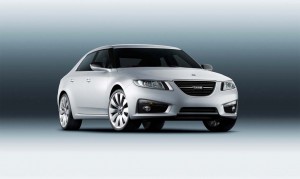Saab, the Swedish automaker recently sold by General Motors, expects to have the much-delayed 9-5 model on sale by July and has three other vehicles in its product pipeline as it restarts its business around the world.
Now owned by Spyker, a Dutch sports car manufacturer, Saab will also plans to introduce a wagon version of the 9-5 next year, as well as a 9-4X crossover vehicle that is also due out in 2011, according Jan Ake Jonsson, Saab’s president and chief executive officer.
Confirming an earlier report on TheDetroitBureau.com, an all new version of the Saab 9-3 is targeted for 2012. The styling for the 9-3 hasn’t been frozen yet but it will be more sporty and agressive.
“The current Saab 9-3 was more of a generic sedan. This will be very different,” said Jonsson, during a visit to Detroit this week.
While not quite repeating the failed “Born from Jets” ad campaign GM tried several years ago, Victor Mueller, the chief executive officer of Spyker Cars, suggested that one might, “Think aircraft.”
Jonsson and Mueller also said the new Saab Automobile AB is keenly interested in developing a new compact or subcompact car – which would replace the old 9-2 that was based on the Subaru WRX.
“It’s not in the product plan yet,” said Jonsson said. For his part, Mueller recently told TheDetroitBureau.com that Spyker still has to come up with a finance plan to pull off a replacement for the 9-2.
But this week, Mueller noted several other companies have come forward offering to work with Saab. Manufacturers of all kinds are now willing to share technology, he said, suggesting that is, “one of the big cultural changes in this industry since the crisis.”
Thus, it is possible Saab could wind up sharing a small car platform with another manufacturer, he suggested, though Mueller declined to offer any specifics.
Jonsson said that Saab is steadily reducing its breakeven point. The goal is to get it down to the point where the company could be profitable selling only “80,000 or 85,000” cars, he said, though he believes Saab’s sales potential is much larger. With its new models, the Swedish maker and its new arent are confident it could sell as many as 125,000 units annually “at which point we would be quite profitable,” contended Jonsson.
Adrian Hallmark, who joined Saab from Volkswagen, back in March, also said one of Saab’s top objectives is to bolster its presence in emerging markets such as China, Brazil and Russia and, eventually, India.
“You could see the day when there are more Saab’s sold in China than in the U.S.” said Hallmark.
Mike Colleran, president and chief operating officer of Saab Northe America, said that dealers are now getting cars from the Saab factory in Trollhattan, Sweden and have increased their orders for new product.
“It”s the first time in 15 months they’ve been able to order cars,” he said.

